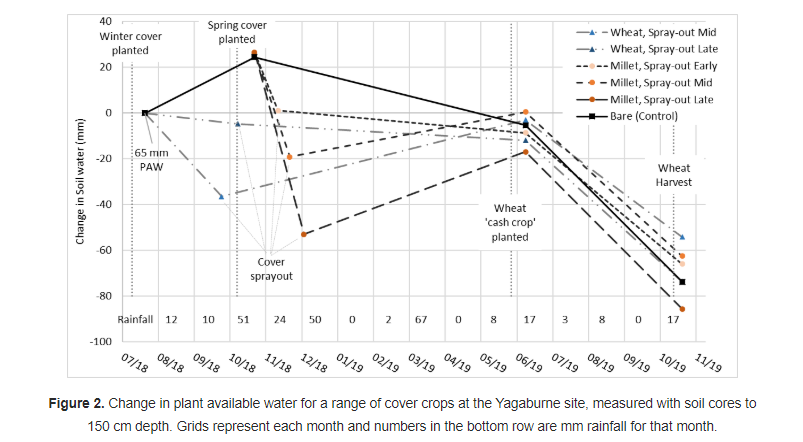Cover Crops Improve Ground Cover in a Very Dry Season
The authors of this paper note in the conclusion: 'The short fallow site had a PAW penalty for growing the cover crop and with no extra biomass growth in the later terminations, there was no advantages in persisting with the cover crop once it had stopped development. After an even establishment assisted by irrigation, the grain yield penalty to the wheat 'cash crop' was highly correlated to starting PAW.' Please access the full paper via the link below if this research interests you
The take home messages from this GRDC-funded research are below. Please access the full paper via the link below for methodology, references, acknowledgements and discussion.
Take home messages from the paper include:
- Previous trials have shown cover crops can increase stored fallow water and improve crop performance and returns in northern farming systems
- A cover crop in a long fallow (14 months) in a dry season allowed improved ground cover with no net deficit in soil water. The extra ground cover improved the opportunity to deep plant wheat.
- A cover crop in a short fallow had a water cost that translated to a yield penalty.
- When the sorghum stopped growing in dry conditions it continued to use water, for no biomass (or cover) increase when it wasn’t sprayed out.
